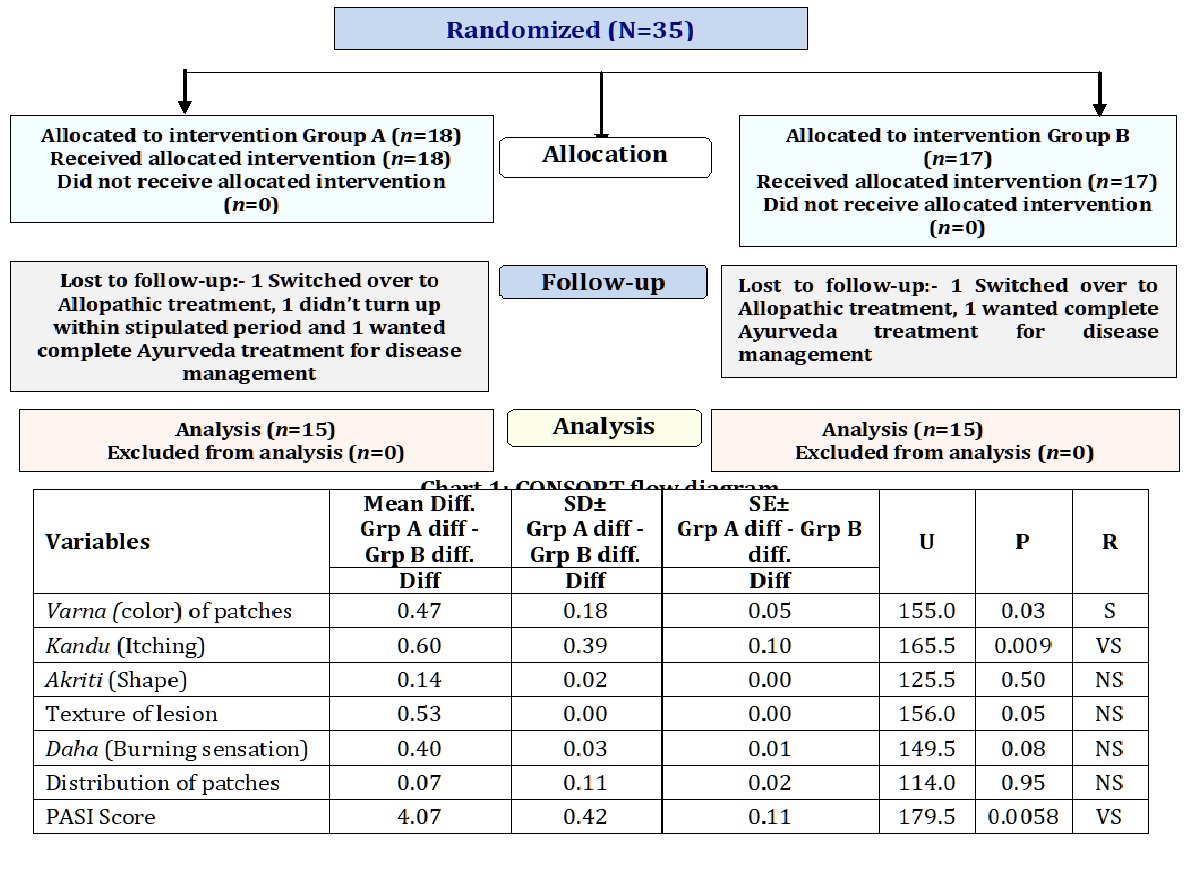Randomized Clinical Trial to Study the Effect of Kunjal Kriya and Guduchyadi Kwath in Mandal Kushtha (Psoriasis)
DOI:
https://doi.org/10.47070/ayushdhara.v11i6.1838Keywords:
Kunjal, Mandal Kushtha, PASI Score, Guduchyadi Kwath, PsoriasisAbstract
The skin diseases, in Ayurveda, have been described under the umbrella of Kushtha which is further divided into Maha Kushtha and Kshudra Kushtha. All Kushtha have Tridosha involvement. Mandal Kushtha is Kapha predominant disease. Swetarakta (faint reddish white), Utsannamandalam (raised patches), Sthiram (stable), Snigdham (unctuous), Annyonyasansaktam (patches joined with each other) are important clinical features of Mandal Kushtha. Since characteristic features of psoriasis are much closer to Mandal Kushtha hence Mandal Kushtha is compared with psoriasis. Aim and Objectives: The aim of this study was to evaluate the effect of Kunjal Kriya and Guduchyadi Kwath in Mandal Kushtha. Materials and Methods: The study was conducted on the subjects of Mandal Kushtha registered in OPD and IPD of NIA Hospital, Jaipur. The 30 subjects who fulfilled the inclusion criteria of the study were randomly selected by clinical and systematic examination; divided into two groups with 15 each, Group A: Kunjal Kriya (empty stomach in the morning) followed by Panchanimba Churna (orally 3 gm, twice daily, after meal with milk) was given for 2 months) & Group B: Guduchyadi Kwath 20 ml (empty stomach in the morning) followed by Panchanimba Churna (orally 3 gm, twice daily, after meal with milk) was given for 2 months. Results: On comparing both groups on subjective parameters, overall relief was seen more in Group A compared to Group B. Relief % in Varna– In Group A showed 42.42% whereas in Group B showed 24.14%. Kandu – In Group A showed 68.75% whereas in Group B showed 43.33%. Akriti– In Group A showed 16.28 % whereas in Group B showed 12.50%. Daha – In Group A showed 47.22 % whereas in Group B showed 28.13%. Texture of lesions – In Group A showed 76.19% whereas in Group B showed 62.50 %. Distribution of patches – In Group A showed 11.63 % whereas in Group B showed 14.29%. PASI Score – In Group A showed 59.69% whereas in Group B showed 38.14%. Discussion: Contents of Guduchyadi Kwath have potent anti-inflammatory, immuno-modulatory and antioxidant properties thereby playing a key role in reducing inflammation. While Kunjal Kriya facilitated the expulsion of morbid material which generally don’t get excreted out through the mucosa of gut and also probably helped in the regulation of Autonomic Nervous System as well as gene expression Conclusion: Kunjal Kriya is more effective than Guduchyadi Kwath in the management of Mandal Kushtha with special reference to psoriasis.
Downloads

Downloads
Published
Issue
Section
License
Copyright (c) 2024 AYUSHDHARA

This work is licensed under a Creative Commons Attribution-NonCommercial-ShareAlike 4.0 International License.


